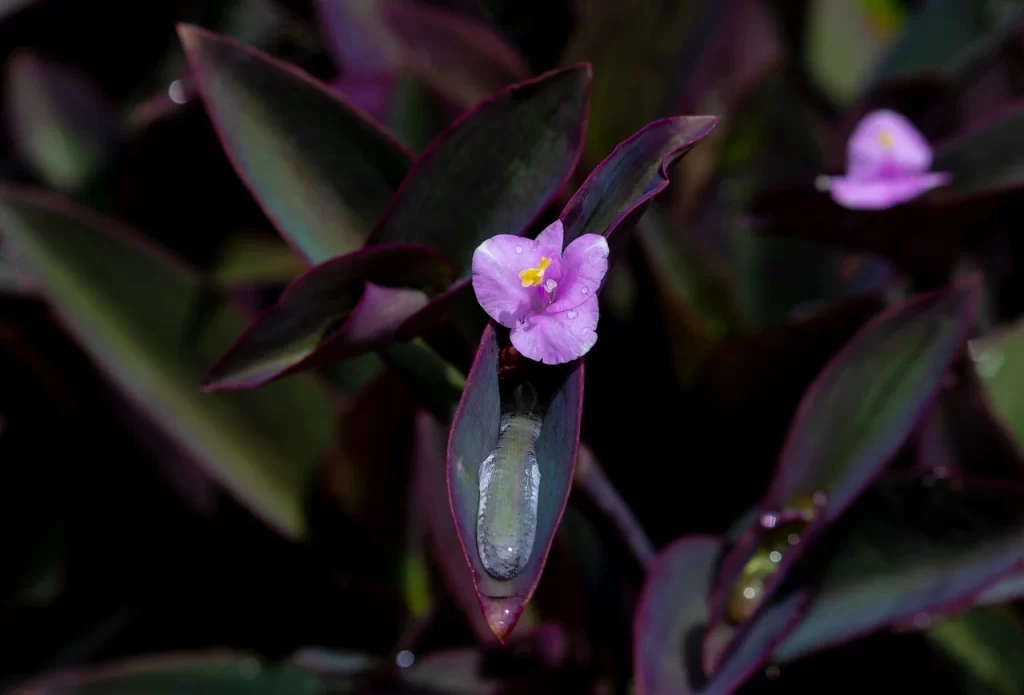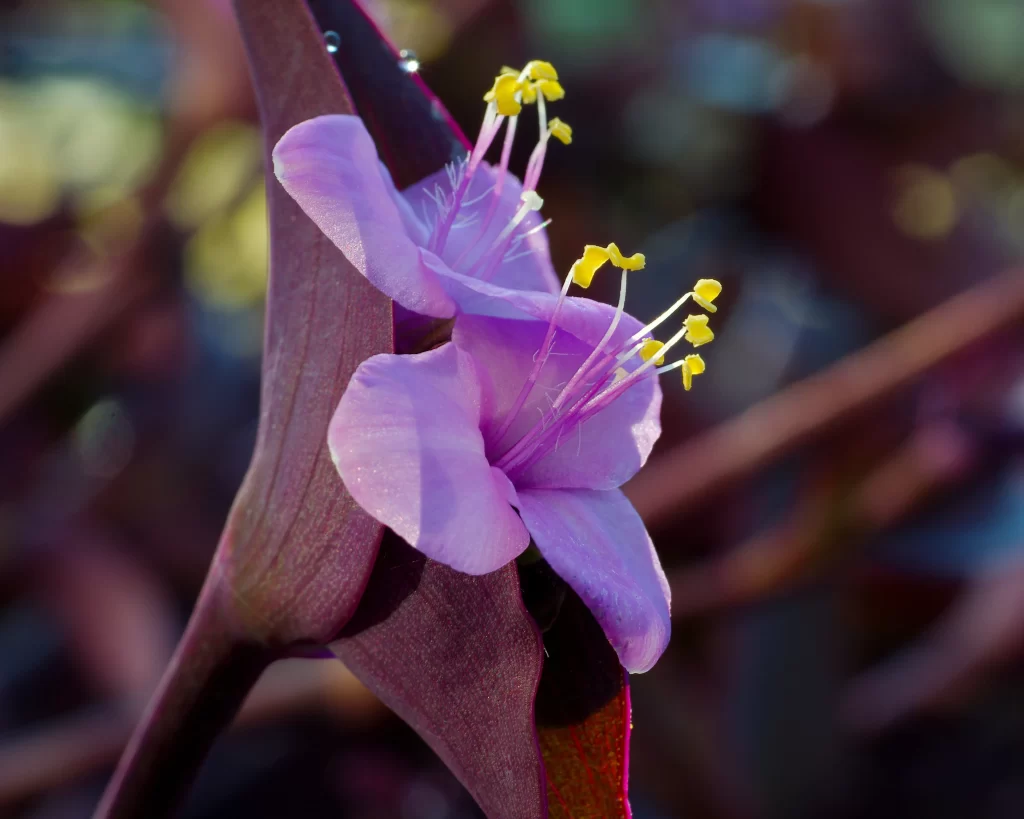Wandering Jew plants are hardy, insect-resistant, and have diverse health benefits. This plant is robust against root and stem rot, provided the soil isn’t consistently soggy. With minimal care needs, the Wandering Jew is an attractive and elegant addition to gardens, though contact with its sap may cause skin irritation in some individuals. Overall, it’s low-maintenance and offers scenic options for indoor or outdoor landscapes.

Read: Lemon Lime Philodendron – Propagation, Care, and Benefits
Tradescantia zebrina and its Significance Benefits
Tradescantia zebrina, also known as ‘Wandering Jew‘, is a medicinal plant with diverse pharmacological activities. It has the benefits of anticancer, antioxidant, antibacterial, and even larvicidal effects against mosquitoes. It is beneficial in traditional medicine for addressing kidney diseases.
Tradescantia zebrina – Medicinal Benefits
Medicinal plant species are crucial in providing alternative remedies, particularly in developing countries with limited access to conventional medicines. Among these plants, Tradescantia zebrina stands out as a relatively lesser-known but significant medicinal plant[1]Kumar Ghouri, et al., TRADESCANTIA ZEBRINA: A PROMISING MEDICINAL PLANT, IAJPS, 4 (10), 3498 -3502, 2017. Read utilized in various traditional medical systems worldwide. Typically gathered from wild sources, this plant holds promise due to its demonstrated antioxidant activity.
Biological importance of Tradescantia zebrina
Tradescantia zebrina has diverse biological activities, highlighting the Wandering Jew Plant benefits and its medical applications.
Antioxidant Activity:
Leaf extract has significant antioxidant activity, as confirmed by another study.
Antibacterial Activity:
The leaf extract has strong antibacterial properties against different types of bacteria.
Inhibitory Activity:
The leaf extracts could be beneficial for treating asthmatic attacks.
Insecticidal Activity:
T. zebrina tea extract is a favorable natural insecticide against pests.
Therapeutic Benefits of Tradescantia zebrina
The diverse applications across cultures mentioned below underscore the potential therapeutic benefits of Tradescantia zebrina, encouraging further exploration in traditional medicine.
Traditional Medicinal Uses of Wandering Jew
Chinese Traditional Medicine
Tradescantia zebrina holds significant value in Chinese traditional medicine, recognized as “ShuiGui Cao” or Water Turtle Grass. It is highly recommended for individuals dealing with kidney diseases.
Read: Snake Plant Benefits: A Green Oasis for Health and Wellness
Jamaican Remedies
In Jamaica, T. zebrina finds utility in addressing diverse health issues. It is utilized for treating high blood pressure, coughs, and tuberculosis. Moreover, the plant’s blood-purifying properties are utilized, with applications ranging from reducing swellings and hemorrhoids to oral ingestion for kidney infections.
Mexican Tonic
In Mexican traditions, a refreshing beverage called ‘Matali’ is concocted from lemon and a sweetened decoction of T. zebrina leaves. Since, this blend serves as a cold tonic drink, reflecting the plant’s versatility in culinary applications.
Afro-Cuban Santeria Practices
Within Afro-Cuban Santeria practices, a decoction of T. zebrina leaves is consumed to alleviate kidney and bladder issues.
Read: Catalpa Species, Propagation, Benefits, Diseases, and Care
Guyanese Herbal Tea
In Guyana, the plant leaves prepare a therapeutic tea for blood cleansing and influenza treatment.
Malaysian Kidney Remedy
In Malaysian traditional medicine, the decoction of T. zebrina is recommended as a remedy to enhance kidney function. Additionally, the plant is believed to have beneficial effects in treating conditions such as poisonous snake bites, urinary infections, and inflammation.
Benefits in Horticulture
The Wandering Jew plant has gained popularity in horticulture due to its decorative value. An attractive trailing plant can be utilized in seasonal containers or hanging baskets. It is highly adaptable for use in above-ground planters, ground covers, and naturalizing, making it a popular choice for indoor cultivation. However, its cascading growth can beautify walls or as an underplant for larger houseplants, making it a versatile addition to any collection.

Conclusion
Recognizing Wandering Jew plant benefits, further research is essential to delve into its medicinal properties, paving the way for potential herbal tea formulations and broader therapeutic applications. As a valuable resource in rural areas with limited healthcare access, T. zebrina merits increased attention and exploration in herbal medicine.



